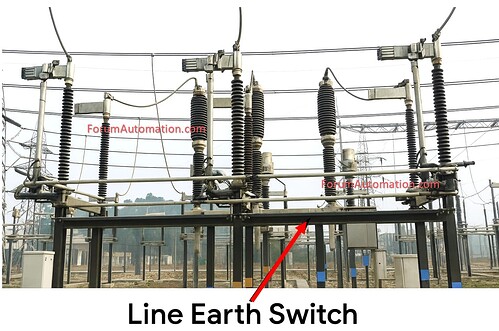What Is a 132kV Line Earth Switch? Why Is It Essential in High-Voltage Substations?
A 132kV Line Earth Switch (also known as a grounding switch) is a key safety device installed in high-voltage (HV) substations located on the line side of a disconnector/isolator that is connected to a 132kV transmission line.
What are the primary functions of a 132kV earth switch?
Its purpose is to make sure that the line is completely de-energized & safely grounded before any repair work is performed.
How does it discharge residual voltage?
Even after a breaker and isolator have opened the circuit a 132kV line can retain capacitive charges (or) pick up induced voltages from the nearby energized lines.
The earth switch creates a low-resistance conduit to ground safely draining the leftover energy.
How does it protect maintenance personnel?
Grounding the line guarantees that the conductor remains at the zero potential which prevents electric shock.
It is an integral aspect of the LOTO (Lockout/Tagout) safety protocol.
How do interlocks reduce accidental energization?
Mechanical & electrical interlocks ensure that:
The earth switch may only close if the main circuit is completely open.
The breaker/isolator cannot close while the earth switch is grounded.
This avoids catastrophic conditions like as closing on a grounded circuit which would result in a major failure.
You can also follow us on AutomationForum.co, Facebook and Linkedin to receive daily Instrumentation updates.
You can also follow us on ForumElectrical.com , Facebook and Linkedin to receive daily Electrical updates.
